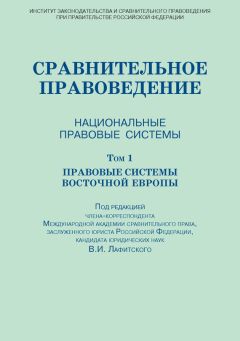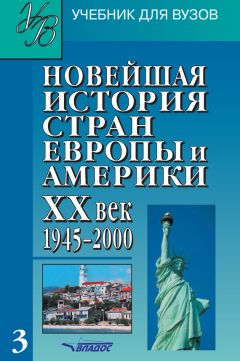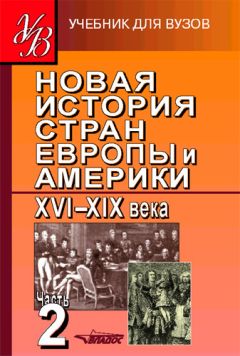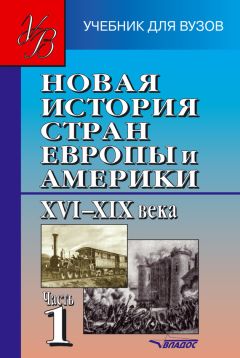Коллектив авторов - Евреи и христиане в православных обществах Восточной Европы
43
Bowman S.B. The lews of Byzantium… P. 39 («The condition of the lew was constantly improving»). Он продолжает: «In Byzantium proper, the economic position of Jews changed markedly for the better under the sponsirship of the imperial government; their influence perharps reached the high levels of government circles, and various officials were accused of succumbing to their power»).
44
Bowman S.B., Cutler A. Anti-Semitism… P. 122–123.
45
Baron S.W. A Social and Religious History of the Jews… Vol. XVII. P. 43.
46
См.: De Lange N. Jews and Christians in the Byzantine Empire… P. 24 («It is clear that with the Latin conquest of 1204, Western attitudes to the Jews were introduced into Byzantium by Western Christians, and some of them survived the restoration of a Greek state, co-existing with older Greek attitudes»).
47
Baron S.W. A Social and Religious History of the Jews… Vol. XVII. P. 41 («In the West-European lands – where the Jewish question was subject to much open debate; where churchman after churchman wrote diatribes adversus Judaeos; where Christian preachers often fulminated against their Jewish compatriots, particularly during the Easter period; where princes and city councilors heaped ordinance upon ordinance regulating the ever-shrinking areas of Jewish activity; and where the populace at large believed in the demonic nature of its Jewish neighbors and hurled against them accusation of ritual murder, desecration of the host, and poisoning of wells, if it did not indeed resort to violence, even massacres – there the Jewish problem evidently was an important, sometimes a burning issue. None of this is recorded in the declining Byzantine Empire»).
48
См.: Williams A.L. Adversus Judaeos…; Judant D. Judaïsme et Christianisme. Dossier patristique. Paris, 1969; Schreckenberg H. Die christlichen Adversus-Iudeos-Texte und ihr literarisches und historisches Umfeld. Frankfurt; Bern; München, 1990 (второе издание); Külzer Α. Disputationes graecae contra Iudaeos…
49
Wilken R. L. John Chrysostom and the Jews. Rhetoric and Reality in the Late 4th Century. Berkeley: University of California Press, 1983.
50
Brandie R. Einleitung. В. Die acht Reden gegen judaisierende Christen // Johannes Chrysostomus. Acht Reden gegen Juden / Eingeleitet und erläutert von Rudolf Brandie. Uebersetzt von Verena Jegher-Buch-er. Stuttgart: Anton Hiersemann, 1995 (= Bibliothek der Griechischen Literatur. Bd. 41). S. 36–79.
51
Malingrey A.-M. La controverse antijudaïque dans l'oeuvre de Jean Chrysostome d'après les discours adversus judaeos // De l'antijudaïsme antique à l'antisémitisme contemporain / Ed. par V. Nikiprowetzky. Lille, 1979. P. 87–104.
52
См.: Déroche V. La polémique anti-judaïque au VIe et VIIe siècle, un mémento inédit, les Képhalaia // Travaux et mémoires du Centre de recherche d'histoire et civilisation de Byzance. Paris, 1991. Vol. 11. P. 275–311.
53
Цит. по: Baron S.W. A Social and Religious History of the Jews… Vol. III. P. 175.
54
См.: Ibidem. P. 178–179.
55
Ibidem. P. 181.
56
См.: Топоров B.H. К русско-еврейским культурным контактам // Топоров В.Н. Святость и святые в русской духовной культуре. Москва, 1995. Т. 1. Первый век христианства на Руси. С. 347
57
См.: Bowman S.В. The Jews of Byzantium… P. 27–40 («The widespread toleration for Jews in the 14th century by the secular rulers of the Balkans, whether Byzantine, Bulgarian, or Ottoman can be seen through the spread of Jewish settlements and, as well, by the influence of Jews in the economic and religious spheres. The extent of this toleration ie further evidenced by the futile attempts of the various Orthodox churches to curb the settlements themselves or the spread of various Judaizing heresies. The Church, to be sure, was more concerned during this period by the potential threat of Roman Catholics, Armenians, and the continuing heresy of the Bobomils, rather than by Jews… That this attitude toward Jews was partly due to the self-interest of the rulers is evident from the practices of Andronikos II and the marital relations of John Alexander. It may also, in part, have been due to the well-known toleration of Jews in the powerful neighboring Ottoman state» (Ibidem. P. 40).
58
Ibidem. P. 36 («To it, the Jews were still déicides, as defined by church traditions»).
59
Baron S.W. A Social and Religious History of the Jews… Vol. XVII. P. 42 («On the whole, the tenor of these writings lacks the heat and venom which often characterized the Western polemical literature in the Late Middle Ages»; «in trying to prove the superiority of Christianity over its mother faith even the Byzantine Jew-baiters do not depict the contemporary Jew as the „demonic alien», as he often appears in the parallel Western letters of the period»).
60
См.: Congourdeau M.-H. Le judaïsme, coeur de l'identité Byzantine… P. 26–27 («Cette proximité… a-t-elle influencé la différence de traitement des Juifs par les chrétiens d'Orient et d'Occident? La prégnance de l'Ancien Testament a-t-elle courtcircuite la construction du Juif imaginaire de l'Occident medieval, qui n'a grand chose a voir ni avec le Juif reel ni avec le Juif exclusivement biblique de l'imaginaire byzantin? Ces questions restent ouvertes»).
61
Dagron G. Judaïser // Travaux et mémoires du Centre de recherche d'histoire et civilisation de Byzance. Paris, 1991. Vol. 11. P. 359–380 («Pour judaïser, il suffit donc de lire l'Ancien Testament comme une histoire des Juifs, porteuse à elle seule d'une signification, alors que cette histoire n'est inscrite dans le texte biblique que négativement, comme le reflet anticipé d'un divorce et d'une condamnation» (P. 378)).
62
Ibidem. P. 379–380.
63
См. предисловие к настоящему изданию.
64
См.: Epstein M. A. The Ottoman Jewish Communities and their Role in the Fifteenth and Sixteenth Centuries. Freiburg: Klaus Schwarz Verlag, 1980; Shmuelevitz A. The Jews of the Ottoman Empire in the Late Fifteenth and the Sixteenth Centuries. Administrative, Economic, Legal and Social Relations as Reflected in the Responsa. Leiden: E.J. Brill, 1984; Фрейденберг М.М. Евреи на Балканах на исходе средневековья. Москва; Иерусалим: Гешарим, 1996.
65
Фрейденберг М.М. Евреи на Балканах на исходе средневековья… С. 17.
66
См.: Bowman S.B. The Jews of Byzantium… P. 39 и примеч. 70.
67
См.: Podskalsky G. Juifs et Chrétiens dans la littérature orthodoxe des Balkans (Moyen-Age – XVIe siècle) // Les Chrétiens et les Juifs dans les sociétés de rite grec et latin. Moyen Age – XIX siècle. Actes du colloque organisé les 14–15 juin 1999 à la Maison des Sciences de l'Homme (Paris) / Textes réunis par M. Dmitriev, D. Tollet et E. Teiro. Paris: Honoré Champion Editeur, 2003. P. 115–121. Что касается такого релевантного критерия, как «кровавый навет», то первое обвинение евреев в ритуальном убийстве, которое к тому же носит полулегендарный характер, относится к временам Сулеймана Великолепного (см.: Galante A. Turcs et Juifs. Etude historique, politique. Stamboul, 1932. P. 17). Согласно статье X. Якобсона (на иврите), отреферированной в англоязычной «Библиографии антисемитизма», на территории Греции первое обвинение евреев в ритуальном убийстве относится к началу XVII в., когда, согласно сохранившимся респонсам, евреи Фив (Thebes) вынуждены были откупаться от обвинителей (см.: Jacobson Η. Testimony from Salonica on an Unknown Blood Libel in Greece in the XVII'h century // Then and Now: Annual Lectures on the Jews of Greece (1977–1983) / Ed. by Zvi Ankori. Tel-Aviv, 1984 (Hebrew) (см.: Anti-Semitism. An annotated Bibliography. 1987 № 0185). Первый же документированный случай обвинения в ритуальном убийстве относится, по данным Галантэ, к 1633 г. Единственный источник, о нем сообщающий, – арабский манускрипт из Йемена, приплетенный к книге молитв. Согласно этой рукописи, два янычара христианского происхождения решили обвинить евреев в ритуальном убийстве. Один из них убил на еврейскую Пасху своего сына и подбросил тело в еврейский квартал. Янычары-клеветники были разоблачены и преданы смерти (см.: Galante A. Histoire des Juifs de Turquie. Istambul: Isis, s.a. T. 2. P. 131–132). Статья Я. Барная (Bornai J. «Blood Libels» in the Ottoman Empire of the Fifteenth to Nineteenth Centuries // Anti-Semitism Through the Ages / Ed. by S. Almog. Oxford: Pergamon Press, 1988. P. 189–194) осталась мне недоступной.
68
Об исследованиях в этой области см.: Топоров В.Н. К русско-еврейским культурным контактам… С. 340–357. В. Н. Топоров говорит о «взрыве этой темы, который произошел в последнее время» (с. 348). См. также: Архипов А. По ту сторону Самбатиона. Этюды о русско-еврейских культурных, языковых и литературных контактах в X–XVI вв. Oackland: Berkeley Slavic Specialities, 1995; Архипов A.A. «Голубиная книга»: к истолкованию названия «Голубиная книга» // Этнолингвистика текста: семиотика малых форм фольклора. М., 1988. С. 174–177; Архипов A.A. Голубиная книга: Wort und Sachen // Механизмы культуры. M., 1990. С. 68–98; Архипов A.A. Древнерусская книга пророка Даниила в переводе с древнееврейского (к истории гебраизмов в древнерусском книжном языке). М.: Институт русского языка, 1982. Ч. 1–3; Архипов A.A. Из истории гебраизмов в русском книжном языке XV–XVI вв. Автореф… дис. канд. филол. наук. М., 1982; Arkhipov A. On the Jewish Dimension of Old Russian Culture: The Jerusalem Temple Curtain in the Russian Primary Chronicle // Jews and Slavs. Jerusalem in Slavic Culture / Ed. by W. Moskovich, O. Luthar, S. Schwarzband. Jerusalem: Hebrew University; Ljubliana: Scientific Research Center of the Slovenian Academy of Sciences and Arts, 1999. Vol. 6. P. 217–250; Алексеев A.A. Переводы с древнееврейских оригиналов в Древней Руси // Russian Linguistics. 1987 № 11. P. 1–20; Алексеев A.A. «Песнь песней» в древней славянорусской письменности. М., 1990. Ч. 1–3; Алексеев A.A. Масоретский текст в России // Jews and Slavs. Judaeo-Bulgarica, Judaeo-Russica et Palaeoslavica / Ed. by W. Moskovich, S. Nikolova. Jerusalem: Hebrew University, Center for Slavic Languages and Literatures, 2005. P. 195–210; Алексеев А. Русско-еврейские литературные связи до 15 века // Jews and Slavs / Ed. by W. Moskovich. Jerusalem; St. Petersburg, 1993. Vol. 1. P. 44–75; Alexeev A. Apocrypha translated from Hebrew within the East Slavic Explanatory Palaea // Jews and Slavs. Festschrift Professor Jacob Allerhand / Ed. by W. Moskovich. Jerusalem: Hebrew University, Center for Slavic Languages and Literatures, 2001. Vol. 9. P. 147–155; Altbauer M. The Five Biblical Scrolls in a Sixteenth-Century Jewish Translation into Belorussian (Vilnius Codex 262). Jerusalem, 1992; Верещагин Е. Рецепция иудео-христианского диалога в Пространном житии Константина-Кирилла Философа // Jews and Slavs. Festschrift Professor Jacob Allerhand / Ed. by W. Moskovich. Jerusalem: Hebrew University, Center for Slavic Languages and Literatures, 2001. Vol. 9. P. 125–146; Петрухин В.Я. Русь и Хазария: к оценке исторических взаимосвязей // Хазары / Под ред. В. Петрухина и др. М.; Иерусалим: Мосты культуры, 2005 (= Jews and Slavs. Vol. 16). С. 69–100; Petrukhin V. Phe Decline and Legacy of Khazaria // Europe Around the Year 1000 / Ed. by P. Urbarkzyk. Warszawa, 2001. P. 109–122; Колода B.B. К вопросу о наследии Хазарского каганата и его роли в истории восточных славян // Хазары / Под ред. В.Я. Петрухина и др. М; Иерусалим: Мосты культуры, 2005 (= Jews and Slavs. Vol. 16). С. 338–345; Чекин A.C. К анализу упоминаний о евреях в древнерусской литературе XI–XIII вв. // Славяноведение. 1994. № 3. С. 34–42; Chekin L.S. Phe Role of Jews in Early Russian Civilization in the Light of a New Discovery and New Controversies // Russian History. Vol. 9 (1990). № 4. P. 379–394; Фундаментальное исследование А. Пересветова-Мурата обобщает накопившиеся данные (см.: Реге-swetoff-Morath A. A. Grin without a Cat. 'Adversus Iudeaos». Vol. 1: Pexts in the Literature of Medieval Russia. 988-1504. Vol. II: Jews and Christian in medieval Russia. Lund, 2002).




